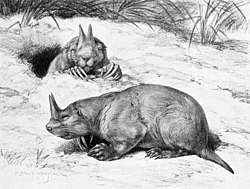Taxonomy
P. leonardi was formerly considered a subspecies of the particolored flying squirrel (Hylopetes alboniger) as H. a. leonardi. It was initially described as a species of Pteromys from a single specimen collected in Myanmar in 1921 by Oldfield Thomas, which remained the only record of the taxon for over 90 years. Future taxonomic treatments, without serious review of the taxon, considered it a subspecies of H. alboniger, and other treatments outright considered it synonymous with H. alboniger. [1] [2]
In surveys from 2014 to 2016, whose results were published in 2021, several flying squirrels morphologically very similar to the original H. a. leonardi specimen were collected on Mt. Gaoligong in Yunnan; genetic analysis performed upon these found these to not only represent their own species, but a completely separate genus most closely related to Iomys , a genus of flying squirrel restricted to Sundaland. This new genus was named Priapomys after the Greek fertility god Priapus, as reference to the very large glans penis of male members of this species. The American Society of Mammalogists recognizes these results. Priapomys and Iomys are thought to have diverged during the mid-Miocene. [1] [2] [3]
This page is based on this
Wikipedia article Text is available under the
CC BY-SA 4.0 license; additional terms may apply.
Images, videos and audio are available under their respective licenses.


